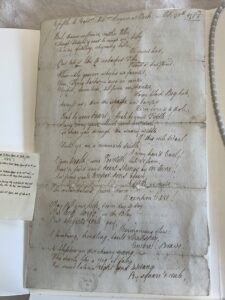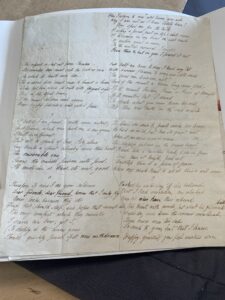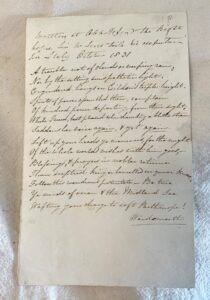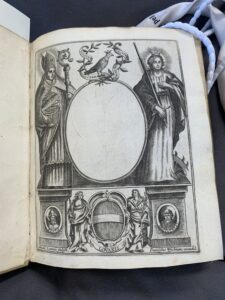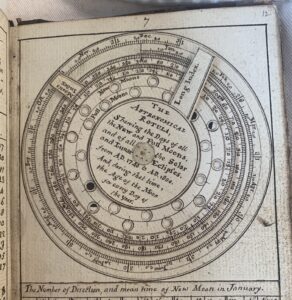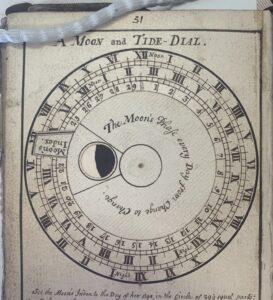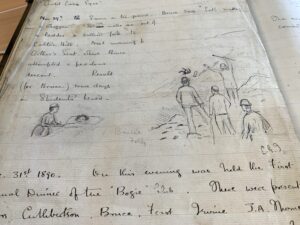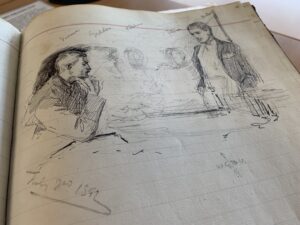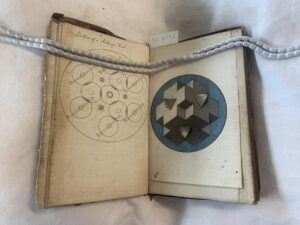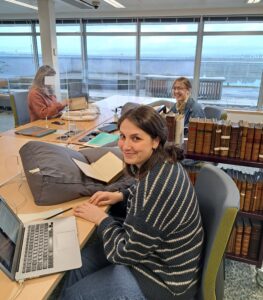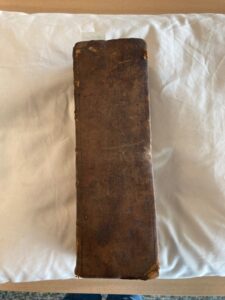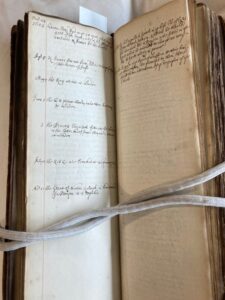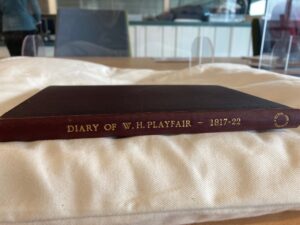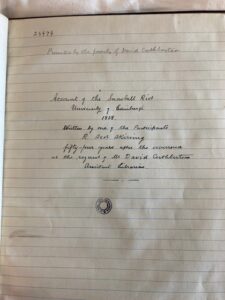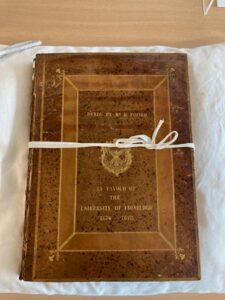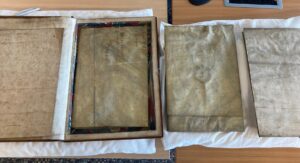Presentation
My name is Lishan Zou, I am a fourth year History and Politics student. As I enter my final year of undergraduate history, I have come to appreciate the importance of physical archives for historical research, especially for history beyond ideals and representations. My research interests lie in 20th century global history, with a particular focus on gender, sexuality and East Asian ethnic subjectivities. Finding archival material for my research is, by the nature of my interests, thematically and geographically difficult. I later realised that they are held in institutions all over the world, in Europe, America and Asia, with only a small proportion digitised and available for my research. This inspired me to learn more about archives and digitisation, and perhaps to contribute to the process. With a desire to touch some physical manuscripts, this Archival Provenance Research Assistant internship appealed to me.

Lishan at her desk.
Paleography
At first, I was quite nervous about my never-learned palaeography skills, apart from a talent for chaotic writing, as this position requires reading and transcribing handwriting, mostly from the early 20th century and occasionally from the 16th to 19th centuries. As a non-native speaker of English, my biggest challenge is the name of places and people. While I can make sense of the rest with contextual interpretation, many English and Scottish names (especially as they have variations in older forms) are completely foreign to me. Fortunately, my line manager Aline has been very warm and supportive, seeing through my nervousness and encouraging me to practice bit by bit. I have learnt to look up to confirm the spelling of names and to become more familiar with certain words related to the archival catalogue.
Provenance information creation
One of the main tasks of this internship is to comprehend the provenance information for two of the University’s legacy sequences, “Dc” and “Dk”, based on the information contained in an early twentieth-century registers, and to do further confirmation with the physical manuscripts. Provenance refers to the original source of an item and its history of transactions, which is important for historians to understand why an item was created and in what context. The collections typically contain items such as letters from intellectuals and aristocrats, lecture notes on medicine, law and philosophy, newspaper cuttings and manuscripts of books. Most of the people involved were either Scottish or concerned with Scotland in some way. Several times, as I tracked down the information of the related individuals, I found out that they lived on the very streets I passed in Edinburgh. I feel like a detective in locating the identities of these people. For example, I was checking the identity of an author of several letters who called himself “John Brown,” and later it turned out that there were four “John Brown” co-authors of these letters! Because Dr John Brown (1810-1882), shared the same name with his cousin, John Brown of Burnley (1842-1929), his son John Brown of Balquancal, and his father, Professor John Brown (1784-1858). It’s fascinating to see interactions between well-known figures back and forth on paper, revealing unexpected connections in the past. However, this documentation of certain subjects and the correspondence of certain individuals in the archives also highlight the socially constructive nature of historical preservation. That is, it is usually the more privileged social class, gender and ethnic group who were able to create and preserve their prints in visible forms.
Physical items
Perhaps the most enjoyable part of this internship is being able to touch the physical manuscripts. I have learned about their temporality through their fragility and the “encoding” of words that time has naturally created: labour for historians, beyond the more visible work of interpretation and presentation. It is also beautiful to have a visual representation of the intellectual labour of the past, and how it differs from that of the present. The following photographs, for example, are of a commonplace book by the Scottish astronomer James Ferguson, a form of noting and recording knowledge that was common in the eighteenth century.

Coll-2222, Volume entitled “James Ferguson’s Common Place Book”, c 1775 (Dk.7.33)

Coll-2222, Volume entitled “James Ferguson’s Common Place Book”, c 1775 (Dk.7.33)
Wider work and learning
The workplace is the University of Edinburgh’s Heritage Collections Office on the fifth floor of the Main Library, overlooking the beautiful Meadows. As a trainee, I am warmly welcomed by archivist colleagues. I am also offered the opportunity to attend a variety of training sessions and events. These include introductions to the storage and conditions of different types of archives, handling manuscripts, and visits to study centres with other archival resources. For my future studies I feel more familiar with finding and contacting the archives, which will be important for historical research at postgraduate level.

Card indexes at the School of Scottish Studies Archives.

View from the office.





